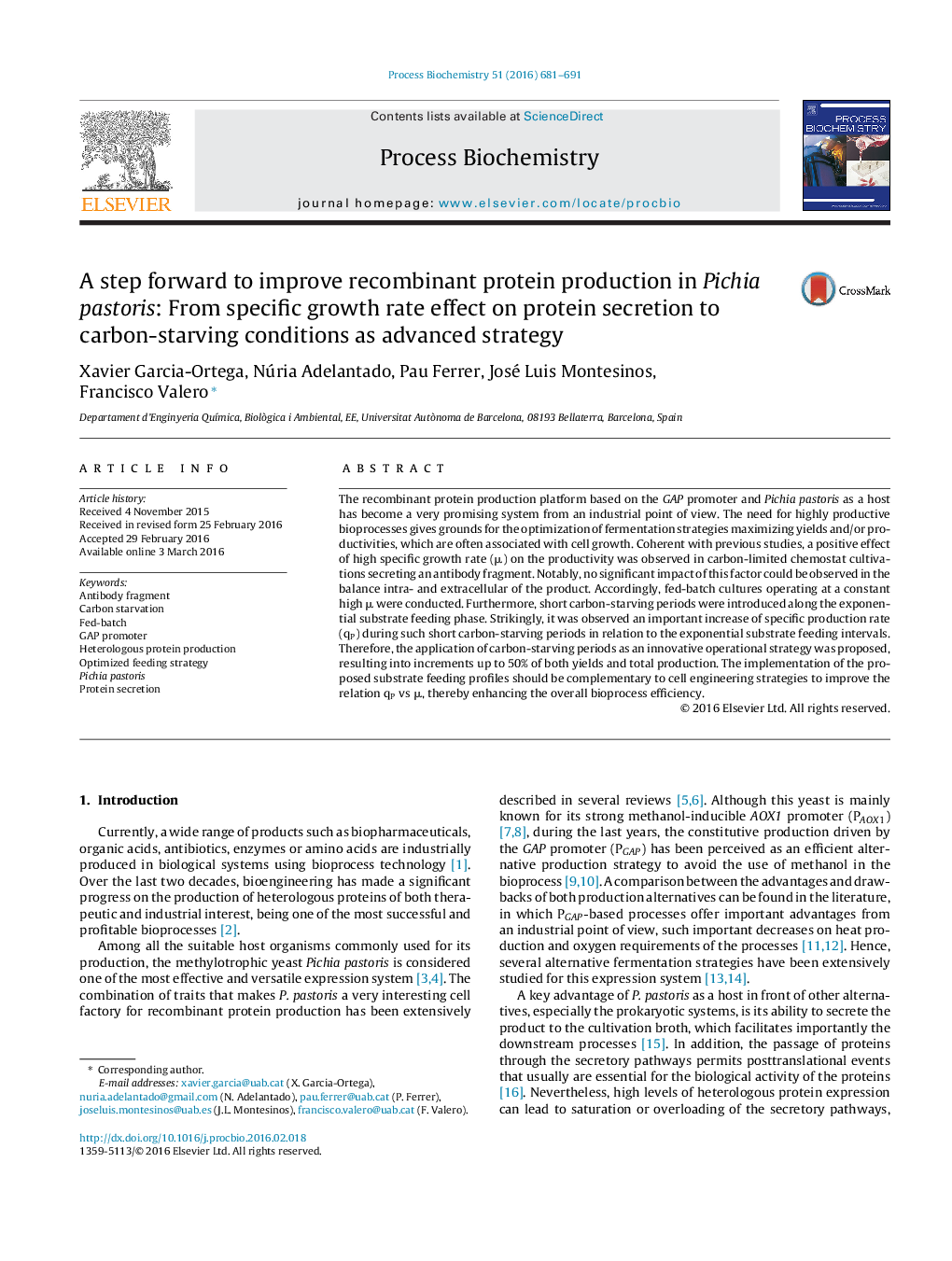| کد مقاله | کد نشریه | سال انتشار | مقاله انگلیسی | نسخه تمام متن |
|---|---|---|---|---|
| 34174 | 45008 | 2016 | 11 صفحه PDF | دانلود رایگان |

• Novel operational strategy in Pichia pastoris fed-batch cultures under GAP promoter.
• Elucidation of the specific growth rate effects on the protein secretion efficiency.
• Development of a method for the reliable quantification and recovery of the 2F5 Fab.
• High specific growth rate presents an increment up to 8-fold on the production rates.
• Implementing carbon-starving periods increases up to 50% yields and productivity.
The recombinant protein production platform based on the GAP promoter and Pichia pastoris as a host has become a very promising system from an industrial point of view. The need for highly productive bioprocesses gives grounds for the optimization of fermentation strategies maximizing yields and/or productivities, which are often associated with cell growth. Coherent with previous studies, a positive effect of high specific growth rate (μ) on the productivity was observed in carbon-limited chemostat cultivations secreting an antibody fragment. Notably, no significant impact of this factor could be observed in the balance intra- and extracellular of the product. Accordingly, fed-batch cultures operating at a constant high μ were conducted. Furthermore, short carbon-starving periods were introduced along the exponential substrate feeding phase. Strikingly, it was observed an important increase of specific production rate (qP) during such short carbon-starving periods in relation to the exponential substrate feeding intervals. Therefore, the application of carbon-starving periods as an innovative operational strategy was proposed, resulting into increments up to 50% of both yields and total production. The implementation of the proposed substrate feeding profiles should be complementary to cell engineering strategies to improve the relation qP vs μ, thereby enhancing the overall bioprocess efficiency.
Figure optionsDownload as PowerPoint slide
Journal: Process Biochemistry - Volume 51, Issue 6, June 2016, Pages 681–691